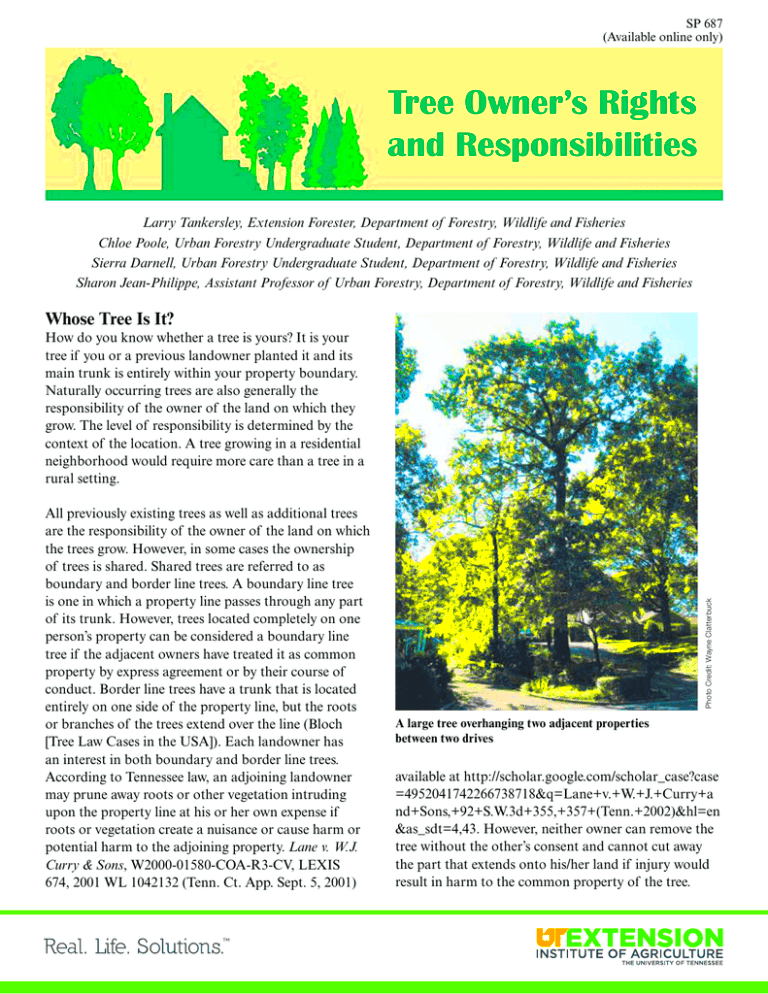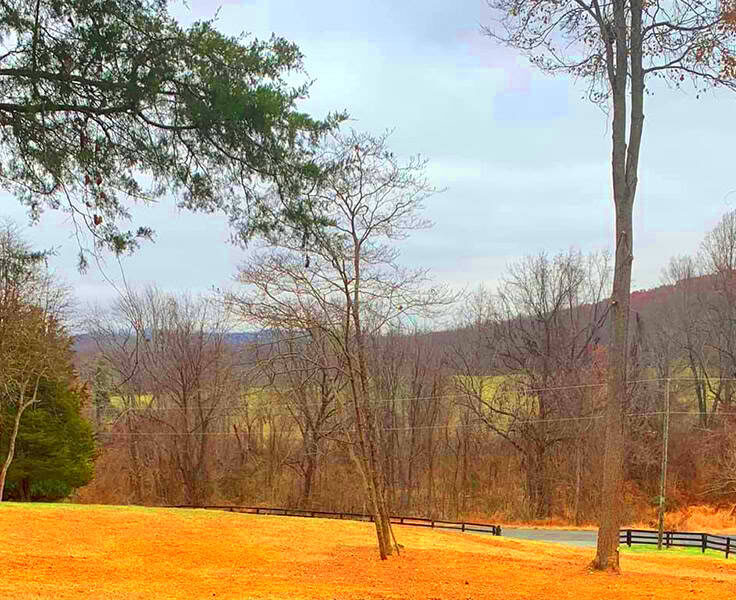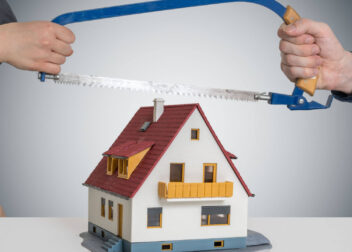Virginia Tree Law and Property Owner Responsibilities
Virginia tree law encompasses regulations and guidelines regarding tree ownership, maintenance, and disputes that arise between property owners. It’s essential for property owners to understand these laws to prevent conflicts and ensure responsible management of trees on their property. Tree-related issues can lead to significant legal challenges, particularly when trees damage neighboring properties. Knowing your rights and responsibilities can help maintain good relations with neighbors and protect your property.
Types of Trees Covered by Virginia Law

In Virginia, tree laws apply to various types of trees, including:
- Shade Trees: These are larger trees that provide significant shade, such as oaks, maples, and sycamores.
- Ornamental Trees: Smaller trees used for decorative purposes, such as dogwoods and cherry trees.
- Fruit Trees: Trees that produce edible fruits, including apple, peach, and pear trees.
- Dead or Diseased Trees: Trees that are dead or pose a risk to nearby structures or persons.
Each type of tree may have different legal implications, especially regarding maintenance and liability. It’s crucial for property owners to identify the types of trees on their land and understand the specific laws that govern them.
Property Owner Responsibilities for Tree Maintenance
As a property owner in Virginia, you have several responsibilities when it comes to maintaining your trees. Here’s a breakdown of these responsibilities:
- Regular Inspections: Conduct regular checks to identify any signs of disease, damage, or hazards.
- Pruning and Trimming: Ensure that trees are pruned and trimmed to prevent overgrowth that could encroach on neighboring properties.
- Removal of Dead Trees: Safely remove any dead or diseased trees to avoid potential hazards.
- Addressing Tree Hazards: If a tree poses a risk to nearby structures or people, take immediate action to mitigate the risk.
Failure to fulfill these responsibilities can lead to legal disputes, especially if a tree from your property causes damage to a neighbor’s property. It’s always best to address any issues proactively and keep lines of communication open with neighbors regarding tree maintenance.
What to Do If Your Tree Damages Neighbor’s Property
Accidents happen, and sometimes a tree from your property might damage your neighbor’s property. It’s crucial to handle the situation responsibly to maintain good relationships and avoid legal issues. Here’s what you should do:
- Assess the Damage: Start by examining the extent of the damage caused by your tree. Take pictures and notes to document everything.
- Notify Your Neighbor: Communicate with your neighbor about the incident as soon as possible. Be honest and open about what happened.
- Contact Your Insurance: Reach out to your homeowner’s insurance provider. They can guide you on the next steps and determine if your policy covers the damage.
- Discuss Repairs: Work together with your neighbor to discuss how the damages will be repaired. Consider sharing costs or finding a fair solution.
- Document Everything: Keep detailed records of all communications, repairs, and any expenses incurred during this process.
By addressing the situation promptly and amicably, you can often resolve the issue without escalating it into a legal dispute.
Legal Rights of Neighbors Regarding Trees
Neighbors have certain legal rights when it comes to trees that may affect their property. Understanding these rights can help you navigate any potential disputes:
- Right to Trim: Neighbors can trim branches that overhang their property, provided they do not harm the overall health of the tree.
- Right to Compensation: If a tree causes damage to a neighbor’s property, they may have the right to seek compensation for repairs.
- Right to Removal: In cases where a tree is dead or poses a threat, neighbors may request its removal. If the tree is on your property, they cannot remove it without your permission.
- Duty to Notify: Neighbors should inform you about any concerns regarding your trees that could potentially cause damage.
Being aware of these rights can help foster a better understanding and communication between neighbors, making it easier to resolve any issues that may arise.
How to Resolve Tree Disputes
Tree disputes can sometimes escalate into contentious issues, but there are several strategies you can employ to resolve them effectively:
- Open Communication: The first step is to talk with your neighbor. Approach the conversation calmly and respectfully, focusing on finding a solution together.
- Mediation: If direct communication doesn’t work, consider involving a neutral third party, such as a mediator, to help facilitate the discussion.
- Written Agreements: If an agreement is reached, put it in writing. This helps ensure both parties are clear on the terms and expectations.
- Consult Legal Advice: If the dispute remains unresolved, it may be wise to seek legal advice. A lawyer can provide guidance on your rights and options.
- Small Claims Court: As a last resort, you can consider filing a claim in small claims court to settle the dispute legally.
Resolving tree disputes can take time, but with patience and understanding, many issues can be settled amicably, preserving good neighborly relations.
Insurance Considerations for Tree Damage
When it comes to tree damage, understanding your insurance policy is crucial. Not all policies are created equal, and knowing what coverage you have can save you a lot of headaches and expenses down the road. Here are some key considerations:
- Homeowner’s Insurance: Most homeowner’s insurance policies cover damages caused by fallen trees, whether the tree is on your property or your neighbor’s. Check your policy for specific terms and conditions.
- Liability Coverage: If a tree from your property damages someone else’s property, your liability coverage may help cover the costs. Again, review your policy details.
- Act of Nature: Many policies cover damage from natural events like storms or high winds, but you need to report the damage promptly.
- Exclusions: Be aware of any exclusions in your policy. For example, if the tree was dead or diseased before it fell, your claim might be denied.
- Documentation: Always document the damage with photos and keep all communication with your insurance company. This will be helpful if you need to file a claim.
Understanding these insurance considerations can provide peace of mind and ensure that you are prepared for any tree-related incidents that may arise.
Common Tree-Related Legal Issues
Tree-related legal issues can arise in various situations, leading to disputes and potential lawsuits. Here are some common issues to be aware of:
- Damage from Falling Trees: When a tree falls and damages a neighbor’s property, it can lead to liability claims. Determining responsibility can be complex, especially if the tree was healthy prior to the incident.
- Overhanging Branches: Neighbors often dispute over branches that extend onto their property. Understanding your rights regarding trimming these branches is essential.
- Tree Removal Requests: If a neighbor requests that you remove a tree they believe is dangerous, refusal can lead to legal action, particularly if the tree is unhealthy or poses a risk.
- Maintenance Issues: Failing to maintain a tree can result in legal liability if the tree causes damage or injury.
- Local Ordinances: Some areas have specific regulations regarding tree maintenance and removal. Ignoring these can lead to fines or legal action.
Being aware of these common legal issues can help you navigate tree-related challenges and foster better relationships with your neighbors.
FAQs about Virginia Tree Law
Many questions arise regarding tree law in Virginia. Here are some frequently asked questions to help clarify important aspects:
- What should I do if my tree damages a neighbor’s property?
Assess the damage, notify your neighbor, and contact your insurance provider to discuss coverage and next steps. - Can my neighbor trim my tree?
Yes, neighbors can trim branches that overhang their property, but they must not harm the overall health of the tree. - Am I liable if my tree falls during a storm?
Generally, if a healthy tree falls during a storm, you may not be liable. However, if the tree was dead or diseased, you could be held responsible. - What are my rights if a neighbor’s tree damages my property?
You have the right to seek compensation for repairs through their liability insurance if their tree causes damage. - How can I resolve a tree dispute amicably?
Open communication is key. Discuss your concerns with your neighbor, consider mediation, and seek a mutually agreeable solution.
These FAQs cover some common concerns, but it’s always a good idea to consult with a legal professional if you have specific questions regarding tree law in Virginia.
Conclusion
Understanding Virginia tree law is essential for property owners to navigate potential disputes and responsibilities effectively. By being aware of your rights and duties regarding tree maintenance, you can foster good relationships with your neighbors and avoid legal issues. Always communicate openly about any tree-related concerns and ensure proper insurance coverage for potential damages. Whether it’s knowing how to respond if your tree causes damage or understanding your neighbor’s rights regarding overhanging branches, being informed will help you handle tree matters with confidence. Ultimately, proactive management and clear communication can go a long way in resolving issues amicably.


